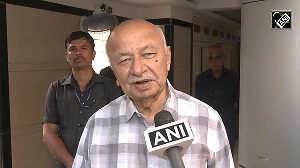 India Inc, which had been battered by downgrades, would continue to see rating downgrades, although their severity and intensity might decline, said rating agency CRISIL.
India Inc, which had been battered by downgrades, would continue to see rating downgrades, although their severity and intensity might decline, said rating agency CRISIL.
On a base of 10,542 ratings, there were 484 downgrades and 320 upgrades in the first half of current financial year. Of the downgrades, 183 were to "default" category.
The default rate scaled new high of 4.2 per cent surpassing the ten-year high of 3.4 per cent. Sectors like textile, steel and hotels accounted for a fourth of defaults.
The downgrades were driven largely by slowing demand and pressure on liquidity, because of stretched working capital cycles.
On the other hand, companies dependent on retail consumption saw the highest number of upgrades. "The continued demand from the retail side is one of the factors that was factored into the upgrades," said Pawan Agrawal, senior director, CRISIL Ratings.
CRISIL's credit ratio (ratio of upgrades to downgrades) declined to 0.66 in first half (H1) of 2012-13 from 0.91 in H2 of 2011-12, primarily on account of slowdown in economy. Ramraj Pai, President, CRISIL Ratings said, "Around a third of the downgrades has been among the highly-indebted industries, including power, construction, engineering and capital goods, and textiles".
However, with pressure on profitability and on economic growth showing signs of abating, CRISIL believes that the credit ratio has begun to bottom out.
The ratings agency said material improvement in credit ratio would, however, take time and needed substantial revival in demand. Over the near term, rating downgrades will continue to outnumber upgrades, although their severity and intensity may decline.
CRISIL's rating actions in the first half of 2012-13 reflect increased pressures on credit quality of corporate India.
However, with indications emerging that pressures on profitability and economic growth are abating, Crisil believes that the weakness in credit ratio is likely to bottom out over the next six months.











 © 2025
© 2025